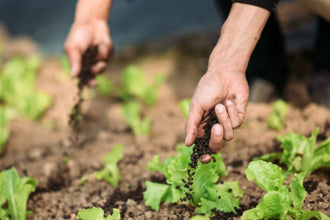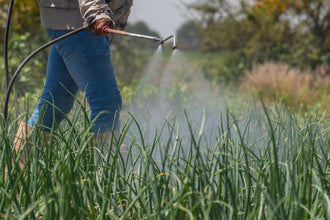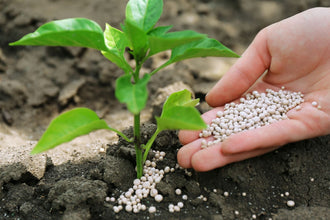Vertical gardening uses hydroponics to grow plants on a vertically suspended panel. These gardens are gaining popularity as they allow for gardening in small spaces. This type of gardening can transform your backyard into a lush area.
Aesthetic Enhancement of Your Space
Creating focal points with vertical gardening involves several strategies. Here are some key points to consider:
1. Visual Appeal through Plant Selection
Selecting the right plants is crucial for creating a visually appealing vertical garden. Careful consideration of factors such as:
- Color: Combine plants with different hues to create a visually striking display. For example, pair bright flowers with deep green foliage or vibrant succulents with delicate ferns.
- Texture: Incorporate plants with varying textures, such as smooth leaves, fuzzy stems, or delicate petals, to add depth and visual interest.
- Pattern: Arrange plants in a way that creates a visually appealing pattern, such as a gradient of colors or a mix of shapes and sizes.
2. Structural Design
The structural design of a vertical garden plays a significant role in its overall aesthetic appeal. Modular systems and efficient lighting can enhance the visual impact of your vertical garden.
- Modular Systems: Use modular systems to create a visually appealing, easy-to-maintain vertical garden. These systems often include interchangeable panels and automated irrigation systems.
- Lighting: Implement efficient lighting systems, such as LED lights, to optimize plant growth and enhance visual appeal. These lights provide a balanced spectrum of light beneficial for plant growth.
3. Integration with Architecture
Integrating the vertical garden with the surrounding architecture is crucial for achieving a cohesive and visually harmonious design. Balancing aesthetics and functionality and incorporating edible plants can contribute to the space's overall appeal.
- Balancing Aesthetics and Functionality: Ensure the vertical garden design balances visual appeal with functional considerations, such as structural stability and maintenance requirements.
- Incorporating Edible Plants: Incorporate edible plants or herbs to enhance the functionality of the vertical garden while maintaining its aesthetic appeal.
4. Innovative Techniques
Incorporating innovative techniques, such as automated irrigation systems and rainwater harvesting. It can enhance the vertical garden's visual appeal and contribute to its sustainability and low-maintenance requirements.
- Automated Irrigation Systems: Implement automated irrigation systems to minimize maintenance efforts and ensure optimal plant growth.
- Rainwater Harvesting: Incorporate rainwater harvesting systems to reduce the dependence on traditional water sources and enhance the vertical garden's sustainability.
Space Efficiency and Increased Growing Area
Gardening in small spaces can be challenging, but with the right strategies, it's possible to cultivate a thriving and plentiful garden. Below are ten methods to help you optimize production and increase growing space, no matter how limited it may be.
1. Vertical Gardening
Grow plants upwards using walls, fences, and trellises. This effectively uses vertical space, allowing for a productive garden even in tight spots.
2. Intensive Gardening
Plant crops close together using methods like square-foot gardening and raised beds. This utilizes every bit of space and can significantly enhance plant yields.
3. Space-Saving Techniques
Implement strategies like roll-out benches or movable trays to increase your growing area. These can help you make the most of your available space.
4. Optimize Soil Health
Improving soil with compost can enrich it, leading to better plant growth. This is crucial for a healthy and productive small garden.
5. Succession Planting
Plant new seeds periodically to ensure a continuous harvest. This practice utilizes space efficiently by keeping your garden productive at all times.
6. Grow Microgreens
Microgreens grow quickly and can be harvested several times, making them ideal for small gardens. They add both flavor and nutrients to meals.
7. Underplanting
Grow smaller plants under larger ones to maximize space. This also helps in conserving water by reducing soil surface evaporation.
8. Use Flood Floors
Although more common in large-scale farms, adapting flood floor systems in small gardens can lead to efficient space use and increased yields.
9. Hanging Baskets
Hang baskets from ceilings or walls to utilize vertical space. They're great for growing various plants without taking up ground space.
10. Employ Gantry Systems
When combined with flood floors in smaller settings, gantry systems, often used in large-scale operations, can also boost space efficiency.
Improved Accessibility and Ergonomics
Vertical gardening brings significant benefits for people with mobility issues. By elevating the plants, it allows everyone to engage in gardening without the need to bend or kneel.
- Mapsted's Technology: Provides features like flexible routes, color and display adjustments, audio instructions, alerts, and speech-to-text search, which help individuals with mobility impairments navigate the workplace more easily.
- Wide Corridors and Clear Paths: Ensure that high-traffic areas are wide enough for wheelchair users to move comfortably without obstructions.
- Lifts and Elevators: Install lifts that accommodate mobility devices like walkers and wheelchairs, making it easier for individuals with mobility issues to move between floors.
- Adjustable Workstations: Provide adjustable-height desks and ergonomic chairs to reduce strain and discomfort for individuals with mobility issues.
- Height-Adjustable Equipment: Ensure that equipment like counters and payment terminals are comfortable for wheelchair users and those who need to stand for extended periods.
- Easy-to-Reach Components: Design workspaces with components that are easy to maintain without requiring bending or kneeling, reducing strain and improving accessibility for individuals with mobility issues.
V. Microclimate and Plant Health
Vertical gardening can create beneficial microclimates that enhance plant health by controlling airflow and sunlight exposure. Here are some ways it achieves this:
- Living Walls: Living walls can reduce wind speeds and turbulence, creating a more protected microclimate for plants. This is particularly beneficial for plants sensitive to wind damage or requiring a more stable environment.
- Shelterbelts: Vertical gardens can create a living windbreak, reducing damage-causing turbulence and cold airflow. This helps protect plants from harsh weather conditions and maintains a more favorable growing environment.
- Shade Cloth: Shade cloth can filter sunlight and reduce direct solar radiation. This helps plants avoid heat stress and conserves water by reducing evapotranspiration. Shade cloth is particularly useful in hot, dry, and windy conditions.
- Climbing Plants: Climbing plants can create shade and mitigate wind. This helps protect plants from extreme temperatures and maintains a more stable microclimate.
- Green Walls: Green walls can help regulate temperature by providing insulation and reducing the urban heat island effect. This creates a more stable microclimate for plants, especially in urban areas where temperatures can be significantly higher than in surrounding rural areas.
- Site-Specific Design: Vertical gardens accommodate specific environmental conditions, including local climate, sun exposure, and surrounding context. This ensures that the plants selected are well-suited to the microclimate and can thrive in the conditions provided.
Vertical Gardening Techniques and Structures
Vertical gardening involves growing plants vertically using various structures and techniques to maximize space and create visually appealing displays. Here are some key techniques and structures used in vertical gardening:
- Trellises and Supports: These structures allow climbing plants like clematis, roses, or vines to grow vertically, adding height and interest to walls or fences. Trellises can also be used to create privacy screens or divide outdoor spaces.
- Wall Planters and Pocket Gardens: Wall planters and pocket gardens are mounted on walls or shelved in rows, providing a compact and space-efficient way to grow plants. These systems often include mesh to control soil dripping and can be used for various plants.
- Tower Gardens: Tower gardens use stacked planters or hydroponic systems to grow plants in a compact space. These systems are ideal for growing vegetables like lettuce or tomatoes in small spaces like balconies or patios.
- Hanging Baskets and Containers: Hanging baskets and containers can be suspended from structures or walls, creating a visually stunning display. Plants with trailing or cascading growth habits, such as vines or ferns, are well-suited for hanging gardens.
- Hydroponic and Aeroponic Systems: These systems use nutrient-rich solutions rather than soil to support plant growth. They can be used in vertical gardens to optimize space and reduce soil-borne diseases.
Key Considerations
- Light and Sunlight: Vertical gardens require adequate sunlight exposure, so they must be placed in areas that receive at least six hours of direct sunlight daily.
- Soil and Watering: Lightweight soil and proper drainage are crucial for vertical gardening. Automated watering systems or self-watering containers can make maintenance easier.
- Pest Control: Vertical gardens attract insects and pests due to the proximity of plants. Incorporating environmentally friendly pest control measures and beneficial insects like ladybirds can help manage these issues.
- Maintenance: Regular pruning and upkeep are necessary to keep vertical gardens looking their best. Consider using low-maintenance options like automated watering systems or self-watering containers.
- Plant Selection: Choose plants suitable for vertical gardening, considering growth rate, sunlight requirements, and flexibility. Mixing plants with different growth rates and requirements can lead to maintenance challenges.
Conclusion
Vertical gardening transforms your backyard with lush greenery and offers a fresh approach to gardening in limited spaces. It enhances the beauty of any area and uses innovative systems to make gardening easy and efficient. With benefits like increased growing area and better plant health, it stands out as a smart choice for garden enthusiasts.
Embrace the joys of vertical gardening and bring a new dimension to your outdoor space. It is a step towards a greener, more sustainable lifestyle that provides beauty and bounty. Start your vertical garden today and enjoy its rewards right in your backyard.
Boost your garden today with Fancy Chicken Premium Manure. Simply sprinkle these organic, pelleted 5-pound packs to grow lush, vibrant plants. Get yours now for healthier soil and a greener garden!







